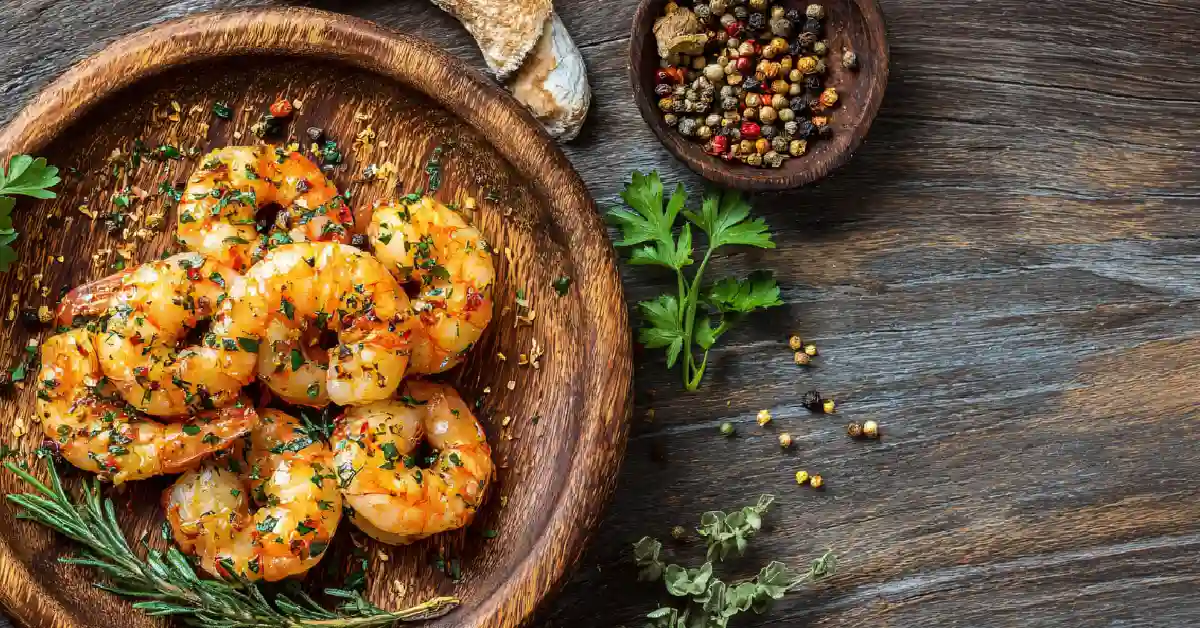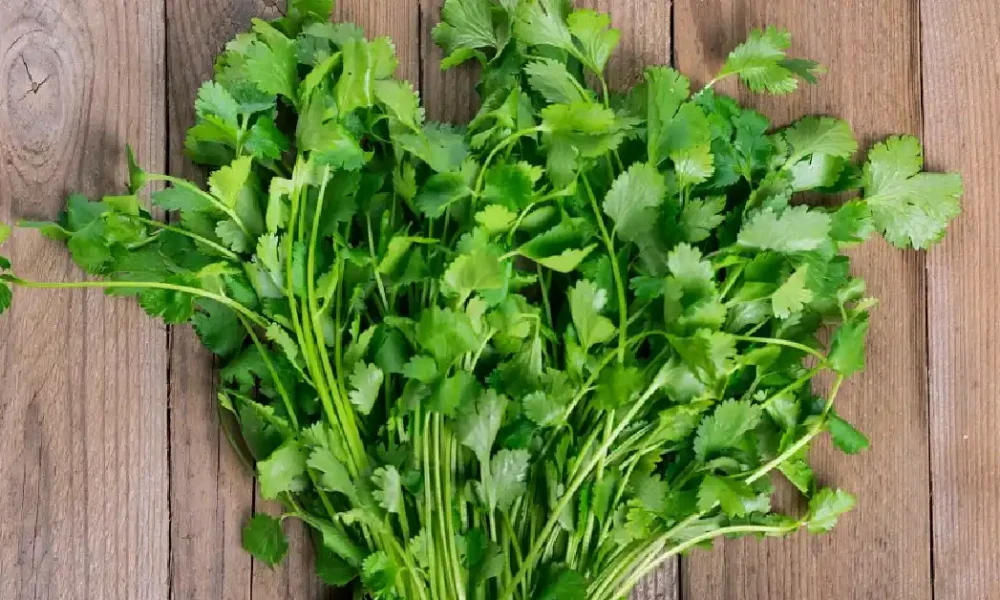Food
Substitute for Cilantro: The Complete Guide to Flavorful Alternatives

Cilantro is a popular herb used in global cuisines, but not everyone enjoys its flavor. In fact, some people describe it as fresh and citrusy, while others find it soapy and unpleasant due to genetic taste differences. That’s where a substitute for cilantro comes in. These alternatives allow you to achieve similar freshness, aroma, and depth of flavor in your recipes without using cilantro itself. Whether you’re making salsa, curry, or salad, finding the right substitute for cilantro can keep your dish balanced and delicious.
1. Background: Why People Seek a Substitute for Cilantro
Cilantro has a love-it-or-hate-it reputation. Scientific studies suggest that some people have a genetic variant that makes cilantro taste soapy. Others may simply not prefer its strong aroma. Additionally, cilantro may not always be available fresh in every grocery store. These reasons create demand for a substitute for cilantro that works in cooking without sacrificing flavor.
2. Key Alternatives at a Glance
Here are the most common substitutes for cilantro, summarized:
-
Parsley – Fresh and mild
-
Basil – Sweet and slightly peppery
-
Mint – Cooling and aromatic
-
Dill – Tangy and earthy
-
Thai Basil – Bold and slightly spicy
-
Coriander Seeds – Warm, nutty flavor (for cooked dishes)
3. Parsley: The Closest Substitute for Cilantro
Parsley is widely considered the best substitute for cilantro because of its similar appearance and mild flavor. It works especially well in:
-
Salads
-
Garnishes
-
Mediterranean dishes
While parsley does not replicate the citrusy notes of cilantro, adding a squeeze of lime can bring the taste closer.
4. Basil: Sweet and Aromatic Option
Basil offers a sweeter and slightly peppery flavor, making it a great choice for Italian, Thai, and Indian dishes. It works well in:
-
Curries
-
Stir-fries
-
Soups
If you’re making salsa, basil can provide freshness without overpowering the other ingredients.
5. Mint: Refreshing Twist in Recipes
Mint is another excellent substitute for cilantro, especially in Middle Eastern and Mediterranean dishes. It brings a cooling freshness to:
-
Yogurt dips
-
Salads
-
Marinades
Its distinct aroma makes it best for recipes where cilantro is used as a garnish.
6. Dill: Earthy Flavor with a Tangy Kick
Dill has a unique, slightly tangy flavor that pairs well with fish, pickles, and soups. Though not identical to cilantro, dill can create an interesting flavor profile in:
-
Sauces
-
Seafood dishes
-
Potato salads
7. Thai Basil and Other Asian Herbs
For Asian cuisines, Thai basil and Vietnamese herbs like culantro can replace cilantro. Thai basil has a bold, anise-like flavor that complements:
-
Pho
-
Stir-fries
-
Curry pastes
Culantro, often mistaken for cilantro, has a stronger taste and is widely used in Caribbean and Latin American cooking.
8. Coriander Seeds as a Substitute for Fresh Cilantro
If fresh herbs are unavailable, coriander seeds can be a good alternative in cooked dishes. They offer a nutty, warm flavor that enhances:
-
Stews
-
Curry bases
-
Marinades
They are not suitable as a garnish but work well in slow-cooked meals.
9. Comparing Different Substitutes
| Substitute | Flavor Profile | Best Used In | Availability |
|---|---|---|---|
| Parsley | Mild, fresh | Garnishes, salads | Widely available |
| Basil | Sweet, peppery | Curries, soups, stir-fries | Common |
| Mint | Cooling, aromatic | Dips, salads, marinades | Common |
| Dill | Tangy, earthy | Sauces, seafood, pickles | Widely available |
| Thai Basil | Bold, anise-like | Asian dishes, curries | Specialty stores |
| Coriander Seeds | Warm, nutty | Cooked dishes, marinades | Widely available |
10. Benefits of Choosing the Right Alternative
-
Keeps dishes flavorful even without cilantro
-
Offers versatility depending on cuisine
-
Works for people sensitive to cilantro’s taste
-
Expands flavor profiles with new herbs
11. Tips for Using Substitutes in Recipes
-
Always adjust quantity: start small and increase as needed.
-
For fresh replacements, add them at the end of cooking to preserve aroma.
-
When using seeds, crush or toast them for stronger flavor.
-
Pair substitutes with lime or lemon juice for extra freshness.
12. Cost and Availability of Substitutes
-
Parsley and mint are inexpensive and widely available.
-
Basil and dill may vary in cost depending on season.
-
Thai basil and culantro are usually found in Asian or Latin markets.
-
Coriander seeds are budget-friendly and easy to store.
13. Pros and Cons of Each Option
Parsley
✔ Easy to find, mild flavor
✘ Lacks citrusy notes
Basil
✔ Great for curries and soups
✘ Too sweet for some dishes
Mint
✔ Refreshing aroma
✘ Can overpower if overused
Dill
✔ Unique tang
✘ Not suitable for all cuisines
Thai Basil
✔ Perfect for Asian dishes
✘ Limited availability
Coriander Seeds
✔ Excellent for cooking
✘ Not usable as garnish
14. Conclusion: The Best Substitute for Cilantro
The best substitute for cilantro depends on your recipe and taste preference. For a close match, parsley with a squeeze of lime works best. For Asian dishes, Thai basil is ideal, while mint or dill add creative twists in salads and dips. No matter the choice, the right substitute ensures your dish remains flavorful and enjoyable without cilantro.
15. FAQs
1. What is the best substitute for cilantro in salsa?
Parsley or basil with lime juice works best.
2. Can I use mint instead of cilantro in curry?
Yes, but use it sparingly as mint has a strong flavor.
3. Is parsley always a good substitute for cilantro?
Yes, especially in garnishes and salads.
4. Can dried cilantro substitutes work?
Dried herbs lose freshness, so fresh parsley or basil is better.
5. What’s the best substitute for cilantro in guacamole?
Parsley or a mix of parsley and mint gives the closest flavor.
6. Can I combine multiple substitutes?
Yes, combining parsley and mint or parsley and basil gives balanced results.

Food
Calandrando: Explore Unique Culinary Delights

1. Introduction
Calandrando represents a unique culinary journey that merges innovation with tradition. Food enthusiasts seeking something extraordinary can discover an exquisite blend of flavors, textures, and experiences. From vibrant appetizers to complex desserts, Calandrando showcases a world where each dish tells a story. This culinary adventure goes beyond mere eating—it’s about engaging the senses, understanding the ingredients, and appreciating the artistry of the culinary world.
With the rise of modern gastronomy, Calandrando has carved its niche, captivating chefs and diners alike. This article explores every aspect of Calandrando, from its origins to its signature dishes, and offers practical insights for those wishing to enjoy it at home or in fine dining settings.
2. What is Calandrando?
Calandrando is a culinary style that emphasizes creativity, high-quality ingredients, and an immersive dining experience. It blends traditional techniques with modern innovations, delivering meals that are not only flavorful but visually stunning. Each plate represents a balance of taste, texture, and presentation, making the dining experience both satisfying and memorable.
This cuisine also prioritizes locally sourced ingredients, seasonal freshness, and sustainable practices. By doing so, Calandrando creates dishes that are not only delicious but environmentally conscious and health-oriented.
More Article Here
3. The Origins of Calandrando
The origins of Calandrando are rooted in centuries-old culinary traditions, evolving through modern influences. It draws inspiration from regional specialties while embracing global techniques. Historical records suggest that early Calandrando chefs focused on the harmony of flavors, emphasizing natural ingredients and artisanal methods. Over time, this approach expanded into a more contemporary culinary philosophy, combining innovation with a respect for tradition.
4. Signature Dishes and Flavors
Calandrando is renowned for its diverse range of dishes. Signature meals often include a combination of fresh seafood, tender meats, vibrant vegetables, and unique spices. Desserts are equally creative, incorporating textures like mousse, gelato, and delicate pastries.
Some hallmark dishes include:
-
Herb-Infused Roasted Meats: Slow-cooked with aromatic herbs for depth of flavor.
-
Seafood Medleys: Fresh catches seasoned with subtle spices to enhance natural taste.
-
Deconstructed Desserts: Combining unexpected textures for a memorable culinary surprise.
Each dish is carefully designed to engage all senses, leaving a lasting impression.
5. Culinary Techniques Behind Calandrando
Calandrando chefs utilize a range of advanced techniques to craft extraordinary meals:
-
Sous-Vide Cooking: Ensures precise temperature control for perfect texture.
-
Molecular Gastronomy: Adds modern flair to traditional dishes, creating unique presentations.
-
Smoking and Curing: Enhances flavor profiles while maintaining the integrity of ingredients.
-
Artful Plating: Focuses on aesthetics to elevate the dining experience.
These techniques ensure that each dish is not only tasty but visually captivating, reflecting the artistry behind Calandrando cuisine.
6. Ingredients That Define Calandrando
High-quality ingredients are central to Calandrando cuisine. Commonly used elements include:
-
Organic vegetables and herbs
-
Fresh seafood and ethically sourced meats
-
Exotic spices and seasonal fruits
-
Handcrafted cheeses and dairy products
These ingredients are carefully combined to highlight natural flavors while maintaining a balance of health and taste.
7. Experience and Ambiance
Calandrando is not just about food; it’s an immersive sensory experience. Restaurants and events focus on ambiance, lighting, music, and service, ensuring that every visit is memorable. The dining environment is thoughtfully curated to complement the culinary creations, creating a holistic experience that engages sight, smell, taste, and touch.
8. Comparison Chart: Calandrando vs Other Culinary Styles
| Feature | Calandrando | Traditional Cuisine | Modern Fusion Cuisine |
|---|---|---|---|
| Flavor Profile | Bold yet balanced | Classic | Experimental |
| Ingredients | Locally sourced, fresh | Common, seasonal | Diverse, global |
| Cooking Techniques | Advanced & artistic | Conventional | Mixed approaches |
| Presentation | Highly artistic | Simple | Creative |
| Health & Sustainability Focus | High | Moderate | Variable |
This chart highlights why Calandrando appeals to modern diners seeking quality, creativity, and sustainability.
9. Why Calandrando Stands Out
Calandrando’s appeal lies in its combination of tradition and innovation. It caters to both seasoned food connoisseurs and casual diners by offering a unique, memorable experience. The focus on fresh ingredients, artistry, and immersive dining makes it a standout choice for anyone seeking more than just a meal.
10. How to Enjoy a Calandrando Experience
To fully enjoy Calandrando, consider the following tips:
-
Choose dishes that showcase seasonal ingredients.
-
Engage with the chef or server to understand the story behind each dish.
-
Pair meals with carefully selected beverages to enhance flavors.
-
Take time to appreciate the presentation and aroma before tasting.
Whether dining out or recreating dishes at home, attention to detail enhances the overall experience.
11. Health Benefits of Calandrando Cuisine
Calandrando is health-conscious by design:
-
Uses fresh, nutrient-rich ingredients.
-
Emphasizes balanced portions and cooking methods that retain nutrients.
-
Incorporates antioxidant-rich herbs, fruits, and vegetables.
Regularly enjoying Calandrando dishes can support overall well-being while providing a satisfying culinary experience.
12. Tips for Home Cooking Calandrando Dishes
Recreating Calandrando at home requires focus on quality and technique:
-
Source fresh, high-quality ingredients.
-
Experiment with presentation and plating.
-
Use gentle cooking techniques like steaming or slow-roasting.
-
Incorporate herbs and spices to enhance natural flavors.
Practicing these tips allows home chefs to replicate the elegance of Calandrando cuisine.
13. Seasonal and Regional Variations
Calandrando cuisine adapts to seasonal availability:
-
Spring: Light salads, fresh greens, and delicate seafood.
-
Summer: Grilled vegetables, vibrant fruits, and refreshing desserts.
-
Autumn: Hearty stews, roasted meats, and earthy flavors.
-
Winter: Slow-cooked dishes, warm spices, and rich textures.
Regional variations add local flair, incorporating unique ingredients and cooking traditions.
14. Calandrando Events and Culinary Festivals
Food festivals and exclusive dining events often feature Calandrando cuisine. These occasions allow chefs to experiment with new dishes and engage with food enthusiasts. Attendees gain insight into culinary techniques, ingredient sourcing, and the artistry behind each plate. Such events also encourage community building among culinary professionals and food lovers.
15. Conclusion
Calandrando is more than a culinary style—it’s a full-scale gastronomic adventure. By merging tradition with modern innovation, focusing on high-quality ingredients, and emphasizing immersive dining experiences, it appeals to food enthusiasts worldwide. Whether exploring signature dishes at a restaurant or recreating recipes at home, Calandrando offers an unforgettable journey for the senses.
16. FAQs
1. What makes Calandrando different from other cuisines?
Calandrando combines traditional techniques with modern innovation, focusing on high-quality ingredients, artistic presentation, and immersive experiences.
2. Can I cook Calandrando dishes at home?
Yes! Using fresh ingredients, proper techniques, and attention to plating can help recreate Calandrando dishes at home.
3. Are Calandrando dishes healthy?
Absolutely. The cuisine emphasizes fresh, nutrient-rich ingredients and balanced cooking methods.
4. What are the key flavors in Calandrando cuisine?
Calandrando highlights a balance of bold and subtle flavors, often enhanced with herbs, spices, and seasonal ingredients.
5. Where can I experience Calandrando cuisine?
Specialty restaurants, culinary events, and curated dining experiences offer the opportunity to enjoy authentic Calandrando dishes.
Food
Gelamento Galore: A Sweet Symphony of Flavor and Art

Introduction
What is Gelamento Galore and why has it become a phrase that excites food lovers everywhere? At its heart, Gelamento Galore is more than just a frozen dessert; it’s a celebration of craftsmanship, taste, and indulgence. It combines silky textures, rich flavors, and a dash of artistry to create an experience that goes beyond eating. Each spoonful tells a story of tradition, creativity, and joy.
In this article, we’ll dive deep into the world of Gelamento Galore—its origins, unique qualities, and how it has risen as a symbol of gourmet indulgence. Whether you’re a curious first-timer or a connoisseur of frozen desserts, this guide will give you everything you need to appreciate Gelamento Galore fully.
1. The Origin of Gelamento Galore
The concept of Gelamento Galore originates from centuries-old traditions of frozen desserts that began in Europe. Over time, artisans refined recipes, combining milk, sugar, and natural flavorings to craft an experience that transcends taste. Gelamento Galore became the epitome of luxury, where quality and tradition meet modern creativity.
More Article Here
2. Why Gelamento Galore Stands Out
Unlike ordinary desserts, Gelamento Galore emphasizes freshness and texture. It uses a higher ratio of natural ingredients with less air, giving it a creamy density that feels rich yet smooth. The focus is always on the integrity of flavor—whether fruity, nutty, or chocolaty.
3. Traditional vs. Modern Approaches
Traditionally, Gelamento Galore followed strict methods: slow churning, fresh milk, and authentic ingredients. Today, while many artisans keep these traditions alive, modern approaches include plant-based variations, sugar-free recipes, and even fusion flavors inspired by global cuisines.
4. Popular Flavors That Define Gelamento Galore
-
Classic Vanilla – timeless and elegant.
-
Dark Chocolate – bold, rich, and indulgent.
-
Pistachio – nutty perfection with subtle sweetness.
-
Strawberry Swirl – refreshing, fruity delight.
-
Salted Caramel – a perfect balance of sweet and savory.
5. Crafting the Perfect Scoop: The Art Behind It
Creating Gelamento Galore is as much an art as it is science. The churning process is carefully timed, the temperature precisely controlled, and the flavor balance meticulously adjusted. Each scoop is the result of patience and artistry, ensuring consistency in texture and taste.
6. Nutritional Aspects You Should Know
Gelamento Galore contains essential nutrients such as calcium, protein, and vitamins from milk and natural ingredients. However, it can also be calorie-dense. Portion control allows you to enjoy the indulgence without guilt. Health-conscious variations, like low-sugar or vegan options, provide alternatives for different lifestyles.
7. Cultural Significance of Gelamento Galore
Beyond being a dessert, Gelamento Galore is a cultural icon. It represents gatherings, celebrations, and moments of joy. Across the world, it has been embraced as a dessert that brings people together and sparks conversation over shared indulgence.
8. Seasonal Variations and Trends
Seasonal trends bring fresh excitement:
-
Summer: Tropical fruits like mango and pineapple.
-
Autumn: Pumpkin spice and cinnamon.
-
Winter: Peppermint and hazelnut.
-
Spring: Floral infusions like lavender and rose.
9. A Comparison Chart: Gelamento Galore vs. Ice Cream
| Feature | Gelamento Galore | Ice Cream |
|---|---|---|
| Texture | Dense and creamy | Fluffy and airy |
| Ingredient Quality | Focus on natural flavors | Mix of natural & artificial |
| Fat Content | Moderate | Higher |
| Serving Temperature | Slightly warmer | Colder |
| Flavor Intensity | Rich and pronounced | Mild and sweet |
10. How to Savor Gelamento Galore the Right Way
-
Eat it slowly to let the flavors unfold.
-
Pair it with fruits, nuts, or pastries.
-
Serve in chilled bowls for an elevated experience.
-
Experiment with toppings like honey or crushed almonds.
11. Healthier Options Emerging in Gelamento Galore
With rising health awareness, low-sugar, dairy-free, and plant-based variations are trending. Almond milk, oat milk, and coconut milk versions allow lactose-intolerant and vegan individuals to enjoy Gelamento Galore without compromise.
12. How Gelamento Galore is Winning Hearts Worldwide
The global demand has turned Gelamento Galore into a cultural ambassador of taste. Its adaptability to local ingredients and traditions makes it universally loved. From urban cafés to countryside shops, it continues to symbolize indulgence and quality.
13. The Future of Gelamento Galore
The future looks promising, with innovations in flavor, sustainability in sourcing ingredients, and personalization through technology. Soon, we may see AI-assisted flavor customization, allowing individuals to create their own Gelamento Galore recipes.
14. Tips for Hosting a Gelamento Galore Party
-
Offer a variety of flavors to suit all tastes.
-
Provide toppings for customization.
-
Serve mini portions for variety.
-
Pair with warm pastries or fresh fruit platters.
15. Expert Recommendations for Beginners
If you’re new to Gelamento Galore:
-
Start with classic flavors before exploring exotic ones.
-
Choose artisanal brands or small-batch makers.
-
Pay attention to texture—it should feel smooth, not icy.
16. FAQs
Q1. What makes Gelamento Galore different from ice cream?
Gelamento Galore is denser, creamier, and uses fewer artificial ingredients compared to traditional ice cream.
Q2. Can Gelamento Galore be vegan?
Yes, plant-based versions using almond, oat, or coconut milk are widely available.
Q3. Is Gelamento Galore healthier than regular desserts?
It can be healthier due to its use of natural ingredients, though portion control is key.
Q4. What are the most popular Gelamento Galore flavors?
Vanilla, pistachio, chocolate, strawberry, and salted caramel are widely loved.
Q5. How should Gelamento Galore be stored?
Keep it at a stable, cool temperature—slightly warmer than regular ice cream—for the best texture.
Conclusion
Gelamento Galore isn’t just a frozen dessert; it’s an experience that celebrates flavor, tradition, and artistry. From its creamy texture to its cultural significance, it continues to enchant people across the globe. Whether you’re indulging in a classic scoop or trying a modern twist, Gelamento Galore promises delight in every bite.
Food
Kampyo Roll: The Sweet & Savory Gourd Sushi That Surprises You

Introduction
In the realm of sushi, flavors often dazzle with raw fish, crunchy vegetables, or bold sauces. Yet among these familiar stars lies a humble, elegant classic: the kampyo roll. This sushi variant features dried gourd strips (kanpyō or kampyo) that are rehydrated, simmered in a sweet-salty sauce, and rolled in sushi rice and nori. Its subtle complexity, chewy texture, and unassuming charm make it a favourite in traditional Edomae sushi. In this article, you’ll explore the origin, preparation, variations, nutritional insight, and pro tips to master the kampyo roll.
What Is Kampyo (Kanpyō)?
“Kampyo” (also spelled kanpyō) refers to thin strips of dried gourd — specifically from a variety of calabash gourd — that are peeled, sun-dried, and preserved. In Japanese cuisine, these strips are rehydrated and simmered with seasonings before use, and they often appear in classic sushi rolls.
When transformed into a roll, these simmered strips anchor the flavors, offering a mild sweetness and chewiness that contrasts beautifully with vinegared rice and crisp seaweed.
More Article Here
Historical & Cultural Background
The use of dried gourd strips in sushi dates back to Edo (Tokyo) era sushi traditions. In many old Tokyo sushi shops, ordering a plain maki (nori roll) would implicitly mean kanpyō maki (kampyo roll). The roll became a staple of Edomae sushi, meant to cleanse the palate between courses or offer a delicate finish to a meal.
Over time, the technique of preparing kampyo evolved, but it always retained its place as a symbol of subtlety, restraint, and craftsmanship — a contrast to bold nigiri or extravagant specialty rolls.
Ingredients & Flavor Profile
| Component | Role in the Roll | Taste & Texture Contribution |
|---|---|---|
| Dried kampyo strips | Main filling | Mildly sweet, chewy, slightly fibrous |
| Soy sauce + mirin + sugar | Seasoning for kampyo | Umami, light sweetness, depth |
| Sushi rice (vinegared) | Vessel for the roll | Tart, slightly sticky, balancing agent |
| Nori (seaweed) | Wrapper | Slight oceanic aroma, crisp boundary |
| Optional garnish (sesame, pickles) | Accent flavor | Nutty or crunchy contrast |
The key is balance. The sweetness in the simmered kampyo should complement, not overwhelm, the tang in the rice.
Step-by-Step: How to Make Kampyo Roll
-
Rinse & Clean
Rinse the dried kampyo strips under cold water to remove surface dust. Some cooks gently massage them with salt to help soften and to remove any residual bitterness. -
Rehydrate & Soften
Submerge the strips in room-temperature water (or lightly salted water) for a few hours or until pliable. Discard excess water. -
Simmer & Season
Drain, then simmer the strips in a mixture of soy sauce, mirin, and sugar on low heat. Stir occasionally until almost all liquid is absorbed and the strips glisten. -
Cool & Trim
Let the strips cool. Trim or cut them so they align neatly with the width of your nori and sushi roll. -
Prepare Sushi Rice
Cook short-grain rice, then mix gently with a blend of rice vinegar, sugar, and salt while fanning to cool. -
Assemble
-
Lay a half sheet (for hosomaki) or full sheet of nori on the bamboo mat, shiny side down.
-
Spread a thin even layer of sushi rice, leaving about 1 cm border at the top edge.
-
Place the simmered kampyo strips centered in a horizontal line.
-
-
Roll Tightly
Lift the edge of the sushi mat closest to you, roll forward, pressing gently, sealing the nori border with a little moisture. -
Cut & Serve
Wet a sharp knife (to avoid sticking), slice into 4 or 6 pieces (traditionally 4), wiping the blade between cuts.
Variations & Serving Ideas
-
Oboro-kampyo roll: Combine the kampyo with oboro (minced prawn or fish paste) to add richness and a splash of color.
-
Sesame kampyo roll: Roll the finished roll in toasted sesame seeds for an extra nutty touch.
-
Inside-out style: For modern twist, flip the roll so that rice is on the outside, kampyo inside.
-
Kampyo + cucumber: Add thin cucumber strips alongside kampyo for fresh crunch.
-
Mini hand-roll version: Use smaller nori and wrap kampyo rice by hand for casual handheld sushi bites.
Nutritional & Health Insights
-
Low in fat: The gourd strips themselves are almost fat-free once simmered.
-
Rich in fiber: Kampyo retains dietary fiber, aiding digestion.
-
Minerals & micronutrients: The original dried strips contain potassium, magnesium, and small amounts of iron.
-
Lower sodium variant: You can reduce soy sauce or substitute low-sodium versions to control salt intake.
-
Vegan & plant-based friendly: As long as no animal products are added (e.g. oboro), kampyo roll suits vegan diets.
Because kampyo roll is simple, its health value lies more in moderation and balance with other sushi items rather than being a “superfood” itself.
Comparison: Kampyo Roll vs. Other Simple Sushi Rolls
| Feature | Kampyo Roll | Kappa Maki (Cucumber Roll) | Tekka Maki (Tuna Roll) |
|---|---|---|---|
| Major filling | Simmered dried gourd | Raw cucumber strips | Raw tuna slices |
| Flavor | Sweet + umami | Crisp, watery, fresh | Savory, rich, meaty |
| Texture | Chewy, slightly fibrous | Crunchy, fresh bite | Tender, delicate |
| Dietary profile | Vegan, low fat | Vegan, light, hydrating | High protein, moderate fat |
| Role in meal | Palate cleanser, subtle | Refreshing interlude | Centerpiece roll |
This chart helps readers grasp where kampyo roll fits among sushi roll options.
Pro Tips & Common Pitfalls
-
Use fresh, quality dried kampyo — older or overly brittle strips may not soften properly.
-
Rehydrate slowly — rushing with hot water may break the strips.
-
Simmer gently — high heat can make the strips brittle or burnt.
-
Cut with a wet knife — minimizes rice sticking and keeps clean edges.
-
Don’t overfill — overstuffing leads to loose or bursting rolls.
-
Serve quickly — sushi rice hardens over time; kampyo roll is best eaten fresh.
FAQs (before conclusion)
1. What is the difference between “kanpyō” and “kampyo”?
They’re variant romanizations of the same dried gourd strips. The food and technique remain identical.
2. Can I make kampyo roll without mirin?
Yes. You can substitute a touch of sugar + light sake or omit mirin entirely, though flavor depth may slightly differ.
3. How long can simmered kampyo be stored?
Stored in an airtight container in the fridge, it can last 2–3 days. Avoid letting rice and kampyo sit together too long.
4. Is kampyo roll gluten-free?
Not always — soy sauce may contain wheat. Use a gluten-free soy sauce to ensure the whole roll is gluten-free.
5. Why is kampyo roll cut into only 4 pieces traditionally?
Historically, it suited packing in sushi boxes and prevented juice leakage. Some modern chefs now cut into 6 pieces depending on presentation and preference.
Conclusion
The kampyo roll embodies the art of simplicity in sushi — few ingredients, careful preparation, and refined balance. Its chewy, sweet-savory profile offers a contrast to bolder sushi flavors, and its vegan, plant-based identity makes it accessible to many. Once you master the rehydration, simmering, and rolling technique, you’ll appreciate how much character lies in this understated sushi roll. Try crafting it at home or ordering it at traditional sushi bars — either way, you’ll taste the legacy of Edo-era culinary restraint in every bite.
-

 Must Read2 months ago
Must Read2 months agoThe Truth Behind the Direct Fairways Lawsuit: What You Need to Know
-

 Tech3 months ago
Tech3 months agoblogsternation .com: Complete Beginner’s Guide, Benefits, and FAQs
-

 Sports3 months ago
Sports3 months agoHow Many Quarters in Football? A Complete Guide to Game Structure and Timing
-

 Tech1 month ago
Tech1 month agoHow to Upgrade Graphics Driver: Boost Speed, Fix Issues & Enhance Gaming
-

 Business3 months ago
Business3 months agoTop Chartered Accountants Benefits: Guide, Tips, FAQs & More
-

 Education3 months ago
Education3 months agoOxford Acceptance Rate: What It Means, Why It Matters, and How to Beat It
-

 Business3 months ago
Business3 months agoUnlocking the Truth About gomyfinance.com Credit Score
-

 Must Read3 months ago
Must Read3 months agoEscalade Must Have Accessories for the Ultimate Cadillac Experience




















